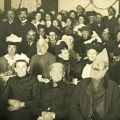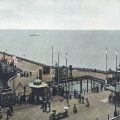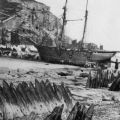
Many of the main public services in Hastings – the police station, the sports centre, fire station, courts, cricket ground, ambulance station and Hastings Museum and Art Gallery - are all standing on land that was once owned by a member of a rich slave-owning family.
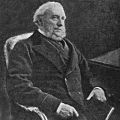
Patrick Francis Robertson (1807-1885) was a wealthy Scottish entrepreneur who in the early 1850s turned the derelict America Ground into Hastings’s main shopping street and seafront residential area. But the root of his wealth was opium.

The ‘America Ground’ is 8½ acres of Hastings town centre which in the early 19th century was an open piece of beach, apparently beyond the borough boundary and with no obvious owner, which was gradually occupied by a thousand or more people (many of them squatters) who lived and worked there - until they were all evicted by the government in 1835.

The development and layout of Hastings and St Leonards owe much to turnpike roads built in and around the towns in the 18th and 19th centuries. This came to a climax in the late 1830s when two Acts of Parliament authorised the construction of a crucial network of roads in the Hastings area, including the A21 from St Leonards to Whatlington and the rival Battle Road through Hollington. And the shape of this network was decided by a few local business entrepreneurs.
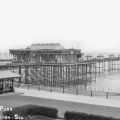
The success of Hastings Pier in the 1870s and ‘80s prompted the construction of a rival promenade and entertainments centre in St Leonards.

Introduction to The Ragged Trousered Philanthropists
By Steve Peak
The Ragged Trousered Philanthropists is often said to be one of the most influential books ever written.
Read more: The Ragged Trousered Philanthropists – a new introduction - 4
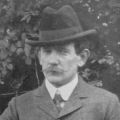
This chapter has two aims. Firstly, it summarises the story in Robert Tressell’s The Ragged Trousered Philanthropists, and helps readers find details of the many people, places and organisations described in the 250,000 words. Secondly, it explains how this Edwardian ‘fiction’ is often describing facts of life in Hastings and St Leonards at that time. Where possible, fiction becomes fact.
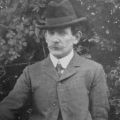
This is a new biography of Robert Tressell, author of the famous and influential socialist novel The Ragged Trousered Philanthropists. It has been put together by Steve Peak,

A hundred years ago, Hastings became a different place. A painter and decorator in the local building trade found life in the town so dreadful that he started putting together a vivid description of it in a novel that was to change British society – and turn Hastings into Mugsborough.

Below is a chronicle of the key events in the history of the Coastguard in the Hastings area, charting how it began as an anti-smuggling force and evolved into the rescue service it is today.

A History of the Coastguard in the Hastings Area by Steve Peak (an Auxiliary Coastguard with the Hastings Company for 22 years)
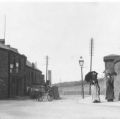
Catherine Cookson, the best-read author, was once the manager of the laundry in the Hastings workhouse. But her life was transformed by a shy local school master - who also tried to teach Steve Peak some maths. Steve sums up Tom Cookson’s role in helping Catherine become Britain’s top selling novelist.
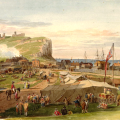
Three ancient fairs were held every year in Hastings until they were brought to an end by the local establishment in the 1860s and ‘70s because of the ‘trouble’ they had been causing.
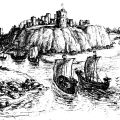
When William the Conqueror invaded England in 1066, the town of Hastings was almost certainly on a headland now known as White Rock. At that time, White Rock was a promontory stretching perhaps up to 200 yards further into the English Channel than it does now, with much of the first town of Hastings probably sited on the section of it that has been lost to the sea.

The Cyril and Lilian Bishop was the RNLI lifeboat stationed at Hastings from 1931 till 1950, during which time she is known to have been launched 99 times and to have saved at least 34 lives.1 In addition, she may have saved possibly hundreds more lives while taking part in the evacuation of British and allied troops from the beaches of Dunkirk in 1940.

